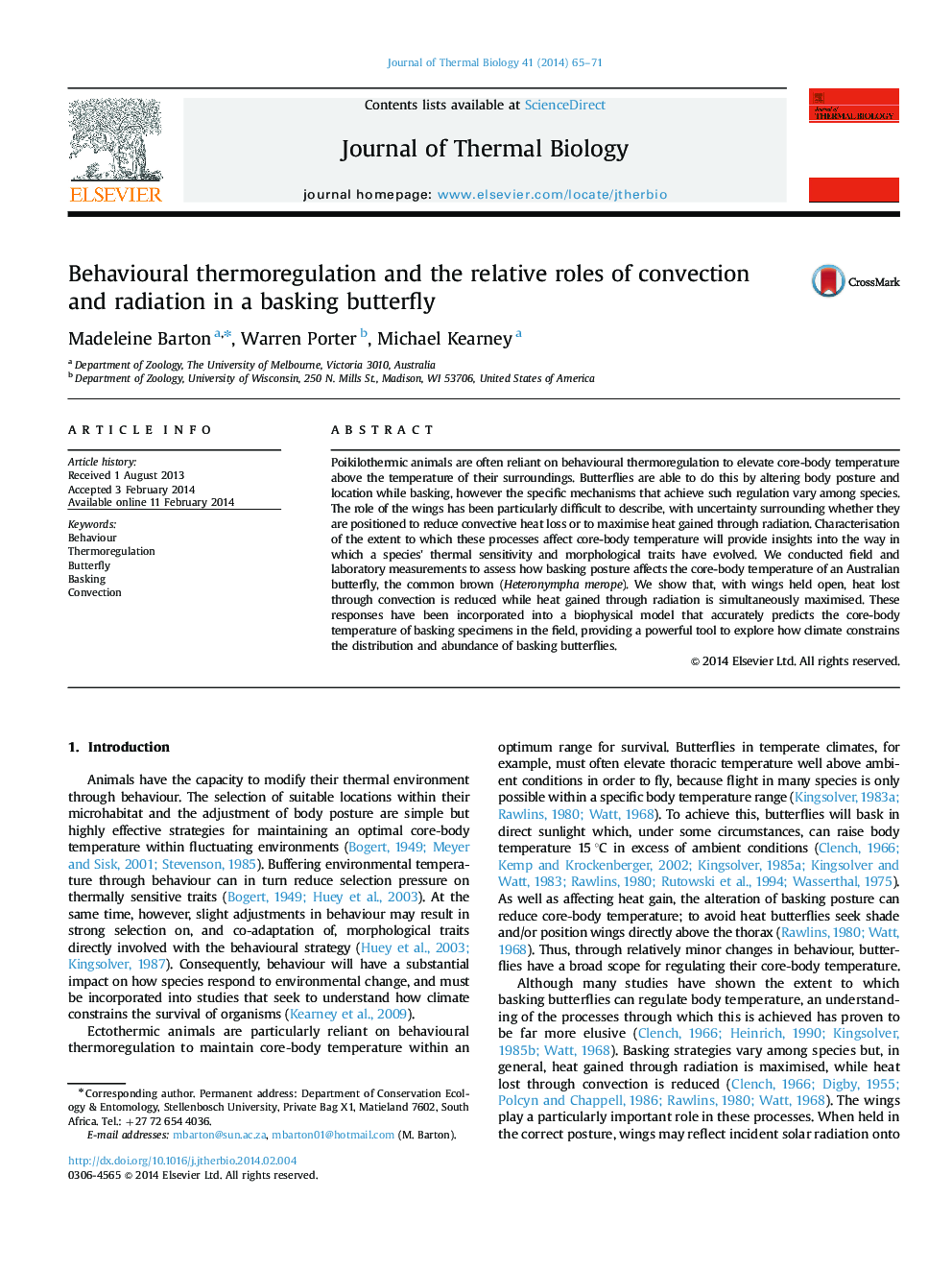| Article ID | Journal | Published Year | Pages | File Type |
|---|---|---|---|---|
| 2842950 | Journal of Thermal Biology | 2014 | 7 Pages |
•We describe how basking posture affects the core-body temperature of a butterfly.•In a wind tunnel, body orientation and wing angle affect convective heat loss.•Wings held partly open, with the body perpendicular to wind, is the optimum posture.•These findings were consistent under laboratory and field conditions.•We then build a biophysical model to predict body temperatures in novel environments.
Poikilothermic animals are often reliant on behavioural thermoregulation to elevate core-body temperature above the temperature of their surroundings. Butterflies are able to do this by altering body posture and location while basking, however the specific mechanisms that achieve such regulation vary among species. The role of the wings has been particularly difficult to describe, with uncertainty surrounding whether they are positioned to reduce convective heat loss or to maximise heat gained through radiation. Characterisation of the extent to which these processes affect core-body temperature will provide insights into the way in which a species׳ thermal sensitivity and morphological traits have evolved. We conducted field and laboratory measurements to assess how basking posture affects the core-body temperature of an Australian butterfly, the common brown (Heteronympha merope). We show that, with wings held open, heat lost through convection is reduced while heat gained through radiation is simultaneously maximised. These responses have been incorporated into a biophysical model that accurately predicts the core-body temperature of basking specimens in the field, providing a powerful tool to explore how climate constrains the distribution and abundance of basking butterflies.
